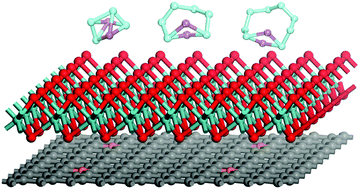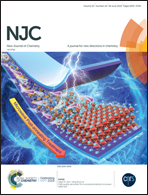Heterostructures of doped graphene and MoX2 (X = S and Se) as promising anchoring materials for lithium–sulfur batteries: a first-principles study†
Abstract
Lithium–sulfur (Li–S) batteries have attracted considerable attention due to their high theoretical energy density. However, the detrimental shuttle effect is a main obstacle that greatly hampers the wide commercial applications of Li–S batteries. Introducing suitable anchoring materials to immobilize soluble Li2Sn species is an effective strategy to alleviate this challenge. Herein, by means of comprehensive density functional theory (DFT) computations, we theoretically designed a class of heterostructure as anchoring materials for Li–S batteries, which is composed of the stacking between a transition metal dichalcogenide (MoX2, X = S and Se) monolayer and B- or N-doped graphene. We found that these heterostructures show outstanding anchoring performance for soluble Li2Sn species due to the remarkable binding strength with a suitable range of binding energies from 1.20 to 2.05 eV induced by charge transfer, thus effectively anchoring the soluble Li2Sn species to avoid their dissolution into electrolytes and save their structural intactness. In addition, the diffusion of Li atoms on the surface of these heterostructures exhibits a low energy barrier, facilitating the electrochemical process. Thus, these proposed heterostructures are a novel class of promising anchoring material for Li–S batteries.



 Please wait while we load your content...
Please wait while we load your content...